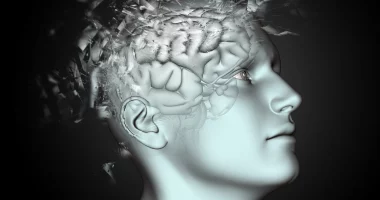Absence seizures are moments when someone suddenly seems to be in a different world for a little while. It’s like they’re daydreaming, but it happens because of some strange electrical activity in the brain. These used to be called petit mal seizures.
Children between 4 to 14 years old often have them, but adults can get them too.
This article will talk about what absence seizures are, how to recognize them, and what can be done to help.
About Absence Seizure
An absence seizure is when something strange happens in the brain for a short time. When we talk about seizures, it means the brain is not working right for a moment. There are different types of seizures, and doctors name them based on where they start in the brain and what happens during them.
Absence seizures are a type that affects the whole brain, unlike some others that only affect one part.
During an absence seizure, a person might suddenly seem like they’re not paying attention. They might stare into space or blink their eyes quickly. These moments don’t last long, usually just a few seconds.
There are two kinds of absence seizures: typical and atypical.
Typical ones happen fast and only last a few seconds, while atypical ones start slowly and can last longer, up to 20 seconds or even more.
Sometimes these seizures happen because of another problem, like a kind of epilepsy called childhood or juvenile absence epilepsy. Doctors usually diagnose epilepsy after someone has had two or more seizures like these.
Symptoms
When someone has an absence seizure, they might seem like they’re not really there for a short time. This means they might not talk, move, or pay attention to what’s around them. It’s like they’re daydreaming or feeling confused.
During the seizure, they might just stare into space or their eyelids might flicker or their eyes might look upwards.
These seizures don’t last long, maybe 10 or 20 seconds. Some people might not even notice them because they’re so quick.
Sometimes, the seizures start slowly and cause more things to happen. Like, a person might suddenly start blinking a lot, shifting their mouth, sapping their lips, or grazing their fingers.
Causes and triggers
Seizures happen because something strange is going on in the brain. Absence seizures usually happen to kids between 4 to 14 years old, but we’re not sure why the brain starts acting up like this.
Sometimes, breathing really fast can make these seizures start. This is called hyperventilation. But atypical seizures, which are a bit different, don’t usually happen because of fast breathing.
Usually, after the seizure, the person gets back to normal right away. But sometimes, they might have several of these seizures in a row.
Treatment
Treatment for absence seizures isn’t always needed, but if they happen a lot and mess up someone’s day, a doctor might suggest treatment.
Doctors can give medicines to help with these seizures. Some common ones are Lamotrigine, Divalproex sodium, Valproic acid, Ethosuximide.
As people get older, these seizures usually happen less often. It’s rare for them to stick around into adulthood.
Taking medicine can really help stop these seizures from happening. And doing other things like sleeping well, handling stress, eating healthy, and exercising can make a difference too.
Complications
Most of the time, absence seizures only last a few seconds, and then the person feels normal again right away. But some kids can have a lot of these seizures, like 50 to 100 in just one day.
Even though the seizures don’t hurt the body, having them all the time can make life hard.
When someone has lots of these seizures, it can make them feel out of it and cause trouble at school or with friends.
This can lead to problems with schoolwork or making friends.
Diagnosis
Sometimes, it takes a while for people to realize someone is having absence seizures. Kids might not even notice it’s happening to them, and grown-ups might just think they’re daydreaming or not paying attention.
To figure out if someone’s having these seizures, it helps to give the doctor as much information as possible. Parents, teachers, or caregivers should try to remember what happens before, during, and after a seizure.
Healthcare providers might do some tests to check the brain and see if anything strange is going on. They might also do other tests to make sure it’s not something else causing the problem, like:
- Blood tests
- Tests for the liver and kidneys
- Scans of the brain, like MRI scans
- Sometimes, they might even do a test called a spinal tap.
Outlook
How things go for someone with absence seizures depends on how often they happen and how bad they are. Usually, kids who have these seizures will stop having them by the time they become adults.
But for some kids, they might need to take medicine for a long time to stop the seizures. Taking medicine regularly can help make sure the seizures don’t happen often and don’t cause too much trouble in everyday life.
When to consult a healthcare provider
If you think someone might be having absence seizures, it’s important to talk to a doctor. These seizures can be tricky to spot because they might seem like the person is just lost in thought.
Here are some signs to watch out for that can help tell the difference between absence seizures and daydreaming:
- They start suddenly.
- They can happen even when the person is moving or doing something else.
- You can’t snap the person out of it.
- They only last for about 10 to 20 seconds.
Summary
Absence seizures are moments when someone seems to zone out for a little bit. It’s like they’re lost in thought. These episodes usually last about 10 to 20 seconds, and then the person is back to normal right away.
Kids usually get these seizures more than adults, and they might happen a few times a day, which can make things tricky.
But there are medicines that can help stop these seizures from happening, so they don’t mess up daily life too much.









